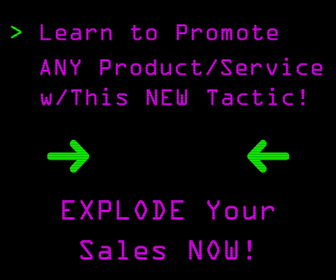A lot of people make mistakes with social media. Most of the time it is simply due to not knowing any better or what these mistakes actually are until it's too late.
Here are the 7 biggest social media mistakes to avoid:
1. Losing out on traffic – Post the same thing multiple times
For Guy’s tweets that link to posts on his site, Holy Kaw, he repeats these four times, eight hours apart:
I picked eight hours because this means that even if the first tweet goes out at the worst times for traffic, one of the repeats will hit the best times… For example, a first tweet at 3:00 am Pacific then hits 11:00 am Pacific and 7:00 pm Pacific.
Here’s a typical example of the traffic from one of Guy’s tweets:
First post: 739 clicks
Second post: 718 clicks
Third post: 565 clicks
This is something we do at Buffer as well. We use different headlines to test which one gets the best clicks for a particular post, and then we repeat the best one using Buffer to reach different timezones with the same content.
2. Using more tools than necessary – Don’t use all the tools available
In fact, this is probably a bad idea. It can divide your efforts so much that your whole strategy becomes diluted because you’re more focused on the tools you’re using that the results you’re aiming for. Using just a couple of tools that actually improve your results and help you manage your strategy more effectively is a better option. Especially if we look at the latest social media statistics and the changes here, it becomes clear that less is more.
3. Measurement overwhelm – Don’t measure every social media metric you can
Working out what you should measure can take a few steps. Here are two to start with that can get you on the right path:
1. Define your goals
Once you know how social media marketing fits into your business’s overall objectives, you can work out what results you’re looking for. This gets you one step closer to choosing useful metrics to measure.2. Choose a good metric
The difference between a ‘good’ and ‘bad’ metric really comes down to how useful it is to you. If you pick a metric that is hard to understand, or one that seems disconnected from the goals you’ve chosen, this can make it difficult to take action on the results you get. And if you’re not taking action, why are you measuring it in the first place?4. Publishing when no one’s online – Don’t publish your posts when you write them
The mistake with publishing as soon as we finish creating something new is that we’re not optimizing for our audience. Assuming that just because we’re online right now means our audience is online and open to consuming our content is an easy mistake to make. A better approach would be to look at the best times for posting content online and work those into our strategies.
5. Filling up the character count – Say less
Focusing on character-counts or word-limits can have a negative effect, though, when we start to squeeze in as much as we can fit. However, shorter posts actually get more engagement, on average.
On Twitter, tweets of less than 100 characters get 17% more engagement. For tweets with links, 120–130 characters is the best range.
On Facebook we can see a similar trend: Keeping your posts below 250 characters can get you 60% more engagement than you might otherwise see. You can even get up to 66% more engagement if you cut it down to less than 80 characters. Regarding Facebook statistics we’ve found that the above changes especially were quite recent so it’s easy to keep to the old patterns.
6. More hashtags, less content – Get back to basics
Hashtags can be difficult to get right, since they can be both helpful or a hindrance to your engagement levels, depending on how you use them. Hashtags let you group your tweet with others around a particular topic or event, and help you to make it clear what you’re talking about very quickly. Using Twitter hashtags correctly can mean 2x engagement for your tweets, but going overboard is an easy mistake to make. Just 1 or 2 hashtags can get you 21% more engagement than if you use 3 or more, so the trick is keeping your hashtags to a minimum.
7. Talking to the wrong people – Don’t publish your posts when it’s convenient for you
From what we talked about in #4, you might be thinking that optimizing your social media marketing based on statistics will lead to more engagement and save you from “talking to no one.” Unfortunately, it’s not that easy. Knowing what the right headline for which audience is is something we’ve explored before, yet there are lots of factors to consider.
It is always important to do your own testing and to continue to do testing all throughout the marketing efforts for your business. This way you can adjust when and where needed and it will take much less time and research to figure out why and how.
Do you have any other big time social media no-no's to add to this list?
Image Source: Bruno Cordioli on Flickr
CHALLENGE Yourself to Profit!
Free Download: Build Your Profit-Generating Online Business With This Free Blueprint
Sign Up, follow the easy steps and You'll get the tactics, strategies & techniques needed to create your online profit stream. It's free!



